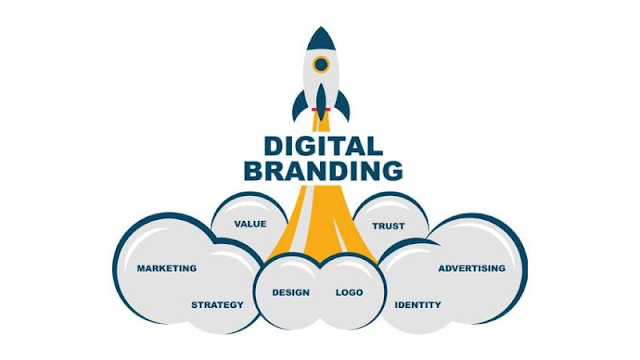The Ultimate Guide To Business Branding
Coca Cola, Starbucks, Addidas are not just drinks or coffee, respectively. These and other brands are more than just products and services. If these are not mere brands, then what are all these household names for? These are the products which not only provide luxury but memorable experiences, therefore make them A BRAND. The above were just examples of a few brands that got recognized because of their branding.
The established and well-known brands live on every platform. From the language in their Instagram caption, to the color palette on their latest billboard, down to the material, colors, patterns used in their packaging, etc., are a part of robust branding.
They know their brand name extends far beyond the label and can entice consumers to choose their products out of a number of options.
This blog will tell you everything about branding. So, let us just jump onto it.
Define Brand
A brand is a feature or set of features that differentiate one organization to another.
A brand includes a name, tagline, symbol, logo, design, brand voice, etc. Not just this, brand also refers to the overall experience a customer undergoes when interacting with a business — as a customer, shopper, social media follower, or a passerby.
Define Branding
Branding is the process of researching, developing, and applying distinctive features to your organization so that the customers can begin associating your brand with the products and services the brand offers. For instance, Coca-Cola is one of the most recognizable logos.
Branding helps the brand (its product/ services) to set a firm foot in the market. Just for example, the Coca-Cola brand has stood the test of time. It is a testament to the power of consistent and successful branding that the consumers have loved over the years.
Branding is an iterative process which requires staying in constant touch with the existing customers and hitting the potential customers. It is important for a variety of reasons — Let us see what are those:
Branding Terminology
Here are some buzzwords for branding that you must be aware of:
It refers to how familiar the common man is with your brand.
High brand awareness can lead to brand being trending, popular and buzzworthy. Brand awareness is important to increase sales and to bring your brand to notice among the customers.
Brand Extension
Brand extensions means when companies extend their brand to develop new products in new places, markets and industries. Brand extensions allow companies or businesses or individuals to leverage brand awareness and equity to create more revenue streams and diversify their product line.
Brand Identity
It is your brand’s personality which helps in building a customer base. Brand identity is something you would want your customers to walk away with after they interact with your brand. The brand identity comprises values, how you communicate your products and services. Also, what do you want customers to feel when they interact with you?
It refers to the process of creating and maintaining your brand. It includes the following; managing the tangible elements of your brand (packaging, color palette, pattern) and the intangible elements (target audience and customer base). Your brand is like a baby, a living, breathing asset so it should be managed accordingly.
Brand Recognition
Brand recognition is how well a customer can recognize and identify your brand without seeing your business name through tagline, logo, jingle, packaging, and advertising.
Brand Trust
Brand trust means building a strong bond so that the customers and consumers believe in your brand. Does your brand deliver on your marketing promises? Do your salespeople and customer service go above and beyond? These things can create trust among your customers, which is important in a world where only 25% of people feel confident in large businesses.
Brand Valuation
Brand valuation is the commercial valuation of your brand. It is derived from consumer perception, recognition, and trust. This concept goes hand-in-hand with brand equity. A powerful brand can make your business invaluable to shareholders, investors, and potential buyers.
How To Create a Brand?
Determine the target audience.
Establish a mission statement.
Define your features, values, and benefits.
Create your brand’s visual assets.
Find a brand voice.
Market your brand on the right platforms.
Know Your Target Audience
Branding leads to awareness, recognition, revenue and trust. We have talked about that already but let us take a step back and understand where those stem from: consumers.
If your brand does not resonate with your audience, it will not lead to the awareness, recognition, trust, and revenue that you might have expected.
You must understand to whom your branding will be speaking. Who does your product serve? And who is your ideal customer?
Establish A Mission Statement
Let us return to a question I had asked in the previous step: Why did you create your business? Answering this question will help in building a mission statement for your brand, which will define your purpose and passion as an organization.
Before you can even craft a brand that your audience values, trusts and recognizes, you must be able to communicate the purpose that your business offers. Then, every part of your brands like logo, tagline, imagery, voice, and personality will reflect that mission and vision.
Your mission statement will be a building block of your brand manifesto, which will encompass why your organization exists and why people should care about your brand.
Define Your Values, Qualities, and Show Benefits
There might be a lot of businesses in your industry. It gets easy to focus on your competition and there is time and place for competitive analysis, but, for now, let us just focus on you.
What is that one thing that your business has that no one else can mimic? The answer is your brand itself.
Make sure you know what your brand comprises, what its beliefs and values are and what benefits it offers.
Just jot down the points that help you set your brand apart from others in the market.
Create Visual Assets
At this point, you should know your target audience and your mission statement.
After you master the above steps, it is time to move on to one of the more exciting parts of branding i.e., the visual design. Here, we are talking about your logo, color palette, typography (fonts), iconography, etc.
While creating visual assets, build a set of brand guidelines to govern the composition so that you are able to use your visual assets. This will ensure that whosoever uses your new branding does it accurately and consistently.
Find A Brand Voice
Take care of the auditory component of your brand. What would your brand sound like?
How will you communicate with your target market is also considered part of your branding. You will have to define your brand voice which not only connects but also resonates with your audience.
Right from your advertising campaigns and social media captions to your blog posts and brand story, make sure your tone is consistent throughout all of your written content. Give your audience a chance to stay familiar with your brand and also learn to recognize the sound of your voice. Master a fun and entertaining voice and your customers will look forward to your emails or social media updates.
Finally Put Your Branding to Work
Your brand only works if you work on it. Once you are done with designing and creating your new brand, integrate it throughout every inch of your business. Pay extra attention to ensure it is displayed anywhere and everywhere your business touches the customers.
Here are some tips to apply your brand across your organization.
Business Website
Splash your logo and typography across your website. Do not use anything but predefined assets for your brand’s guidelines.
Your website is a crucial part of your company’s identity and if it fails to reflect your brand, it will only provide a jarring customer experience. Also, ensure that all web copy, call-to-action, and product descriptions reflect your brand voice.
Social Media
All profile photos, art, branded imagery should reflect your brand. You can put your logo as your profile photo. Make sure everything just reflects your brand voice.
Product Packaging
If you have any physical product, make sure those reflect your brand voice. For that, your packaging should reflect your new branding in its colour, design, size, and feel.
Irrespective of the niche, contact the experts at the Big Unit for branding, digital marketing and other services. We are just a call away to help you.






Well Done. You are good define about digital marketing services. Professionals provide you professional digital marketing Services in USA and Canada which improves your business visibility in Search Engine.
ReplyDeleteGreat work! Keep up the good work Advertising Agency Melbourne. Where do I begin with Juno Creative? They are, without a doubt, one of the most innovative and captivating advertising agencies in Melbourne. As someone who's always on the lookout for exceptional creativity, I stumbled upon Juno's work, and I must say, I'm thoroughly impressed.
ReplyDeleteThis comment has been removed by the author.
ReplyDelete